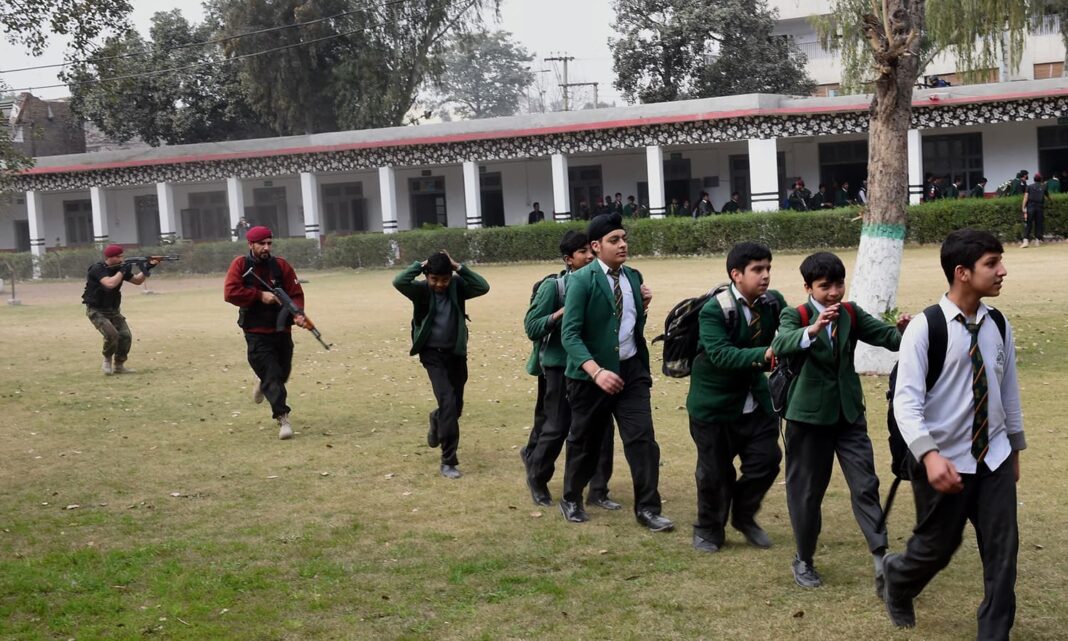Over the last few decades, the concept of emergency management has evolved significantly to become a part of the field of school safety. The alarming rates of war, violent acts, terrorist activities, and natural calamities have raised awareness about the need to focus on this area of education.
In addition to war-related emergencies, other crises also impact schools. These include medical emergencies, public health crises, accidents, injuries, and the loss of a school community member. Therefore, it is high time for school emergency management plans to adopt an “all-hazards” approach so that children are well-equipped to handle a wide range of challenges.
School administrators have learned to be proactive by training students before a critical event occurs. This article aims to raise awareness among school systems that are working on war emergency education for children or have not yet considered it.
“It is easier to build strong children than to repair broken men.” ~Frederick Douglass
Children are especially vulnerable in war situations. Those living in or fleeing from war-affected areas face challenges that have lasting effects on their overall well-being. Research shows an increased risk of mental disorders and other forms of psychopathology among such children. A lack of both knowledge and preparedness further contributes to panic and trauma.
“In every war zone, it is the children who suffer first and recover last.”
~ UNICEF Report on Children in Armed Conflict (2022)
According to a report by UNICEF, over 426 million children were living in conflict zones by the end of 2021. Around 47% of these children developed post-traumatic stress disorder (PTSD), and 43% experienced depression. Research by Save the Children in Syria revealed that 84% of children had experienced bombing, and 71% showed symptoms of toxic stress.

“The invisible wounds of war are carried longest by the youngest.”
~International Rescue Committee (2023)
The Ukraine Psychological First Aid in Schools program, Japan’s Disaster and Conflict Preparedness initiative, and Lebanon’s UNRWA Resilience Workshops are some of the successful programs aimed at developing confidence in handling emergencies. These programs incorporate practices such as role-playing, mindfulness, resilience-building activities, and war and earthquake drills.
We must introduce age-appropriate survival education in schools to prepare future generations for critical situations such as war. Children at the school level can be sensitized according to their age group by allocating one period per week to this purpose. This need not rely on lecture-based instruction; rather, children should be given a vivid and practical understanding of the challenges associated with a state of war.
Storytelling can play a pivotal role in helping students comprehend the complexities of such situations. Additionally, role-plays can enable students to simulate war scenarios and practice appropriate responses, ensuring they are not perplexed or caught off guard during real emergencies. Visual displays, such as posters in classrooms and corridors, can also serve as constant reminders of useful tips and survival strategies.
Along with first-aid training, students should also be guided on how to pack their emergency kits, including essential items such as water, snacks, a flashlight, a whistle, and an ID card. This practice will foster a sense of responsibility in children during times of conflict, as they will learn when and how to use these items effectively.
Additionally, training can be provided to help them develop mental and emotional resilience by incorporating mindfulness techniques into lessons. These may include deep breathing exercises, positive self-talk, and relaxation games.
The role of parents is crucial, as they serve as a primary source of support and encouragement. Motivation from home can help children remain active and engaged during drills and training sessions at school. To facilitate this, a clear and open channel of communication should be established between teachers, parents, and emergency personnel involved in the training. This collaboration will ensure that children arrive at school well-prepared for drills or any other emergency-related activities.

Additionally, school administrations may consider forming a community support group for children affected by war. Such initiatives can cultivate empathy and peer support among students, helping them understand the emotional impact that war can leave on individuals. Engaging in community work will encourage children to look out for one another during times of crisis, rather than remaining solely self- or family-focused.
“Even in war, a child who is taught to hope can learn to heal.” ~Dr. Boris Cyrulnik
We know that being proactive helps prevent chaos. Including war-emergency education in schools has the potential to save countless innocent lives during critical times. Knowledge without application is meaningless, and the same applies to academic learning without survival skills.
Beyond physical preparedness, psychological first aid is equally essential in shaping empowered survivors. Educational policymakers must seriously consider formalizing emergency training within the school curriculum. Our goal should be to raise prepared, resilient children, not helpless victims of war.
“Children may not remember what you taught them, but they will remember how you made them feel in a crisis.” ~Maya Angelou
References:
- Guide, F. O. (2006). Psychological First Aid.
- Peltonen, K. (2024). Children and war–vulnerability and resilience. European Journal of Developmental Psychology, 1-13.
- Santa Barbara, J. (2006). Impact of war on children and the imperative to end war. Croatian medical journal, 47(6), 891.
- United States. Department of Justice. (1998). Annual report on school safety. US Department of Education.
- McDonald, A., Buswell, M., Khush, S., & Brophy, M. (2017). Invisible Wounds: The impact of six years of war on the mental health of Syria’s children. Save the children.
- Canton, H. (2021). United Nations Relief and Works Agency for Palestine Refugees in the Near East—UNRWA. In The Europa Directory of International Organizations 2021(pp 286-289). Routledge.
- Galatsch, M. Enhancing Access to Healthcare for Displaced and Conflict-Affected Children.
- EVER, T. (2023). INVISIBLE AND FORGOTTEN.
- Pillay, M. (2025). Education as a Catalyst for Peacebuilding beyond the Classroom.
More from the author: Climate Education for Children through Storytelling and Fiction

Syeda Khair-ul-Bariyah has been associated with teaching since 2007. She is a synthetic organic chemist and a science and fiction writer. She has publications in both national and international journals in the field of Chemistry. Moreover, she is the author of a stage playbook, “Peregrination of the Soul,” and has a couple of articles and poems published on various websites.

